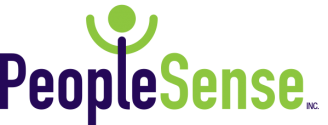Some Time & Attendance Processes Can Squash a Company’s Growth
You may think that time & attendance tracking consists solely of clocking in or out and working with HR, but there’s a lot more to it than that. In fact, the time & attendance process your company uses is likely to impact every area of your organization – and getting the process wrong has high stakes, including exorbitant fees, elevated turnover rates, and a lot of wasted time.
Every business knows that their employees are their greatest asset and their largest expense. However, many companies don’t realize that effective, efficient time & attendance software can also be an incredible asset, one that reduces your overall expenses.
Here are three other facts you may not know about time & attendance.
1. “Simple” Time Tracking Methods Aren’t Usually That Simple
Many companies think that by going tech-free with paper timesheets, they’re simplifying their processes while saving time and money. Sadly, those businesses couldn’t be further from the truth.
In fact, paper-based timesheets typically take seven steps to process, from time capture to payroll processing, whereas automated and integrated software solutions cut those required steps in half!
Guess what? 50% less administrative work will save your company time and money.
2. Good Time & Attendance Software Achieves ROI in Multiple Ways
When planning for a fast return on your investment, you should look for software that pays you back in various ways.
The most obvious way to calculate ROI is to measure time savings. The best solutions on the market today can reduce payroll processing time to a mere 20 minutes per pay period, saving business owners up to 95% of their previously wasted time.
A less apparent way to determine investment return is to consider how much you can save on labor costs. Effective time tracking software offers valuable insight into the productivity and habits of your workforce, which can help you make faster, more confident decisions about workforce allocation, hiring, and firing.
3. Many Employee Timesheets Are Unintentionally Inaccurate
Most employees don’t fill out timesheets twice a day. Instead, they hastily complete their timesheets a few minutes before turning them into HR. Their delayed time tracking can result in timesheet mistakes, which creates errors on your payroll and reporting. Fixing these errors can eat into your time.
If you miss a mistake and your reports are inaccurate, regulatory government agencies may determine that you didn’t pay employees for overtime or that you’re not providing mandated ACA healthcare options. Clearing up these misunderstandings takes even more of your valuable time, and if you can’t quickly verify your numbers, you may face stiff fines for noncompliance.
It’s easier than you think to avoid those fines. Simply use automated time tracking devices and software that integrate with your ERP.
Start Uncovering Time and Cost Savings at Your Business
Business leaders are often shocked when they discover how much their standard time tracking procedures have slowed down their growth potential, and you might be too. Luckily, you now have the option to kick your productivity into high gear and build your company faster.
But it’s up to you to take the first step. Right now.



Recent Comments